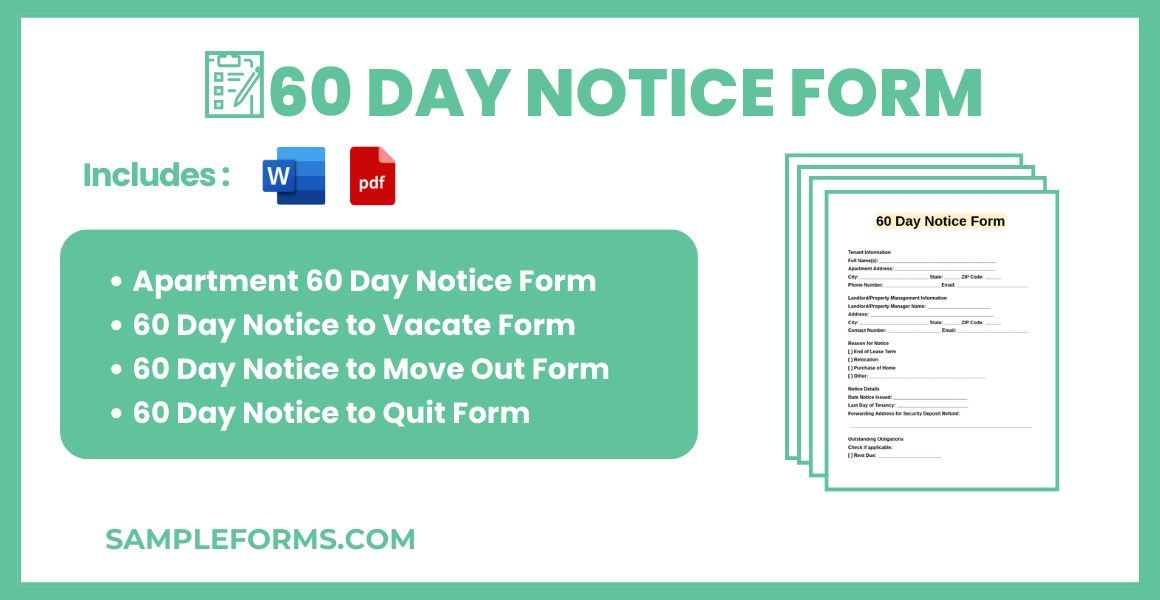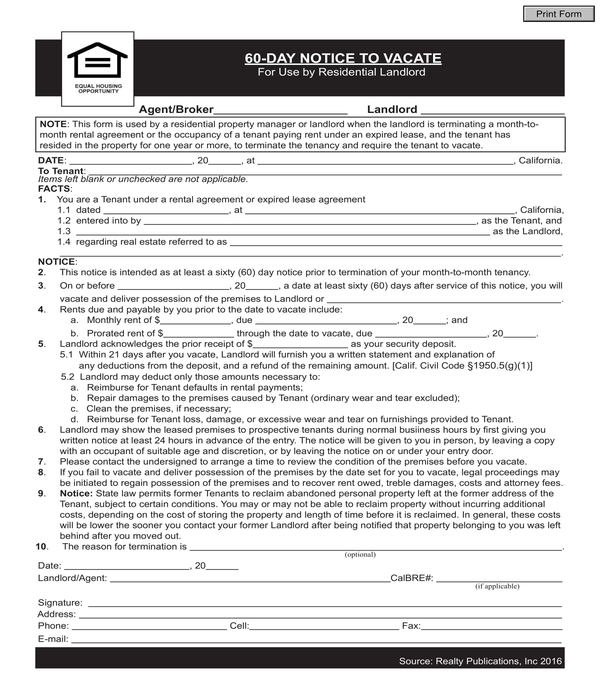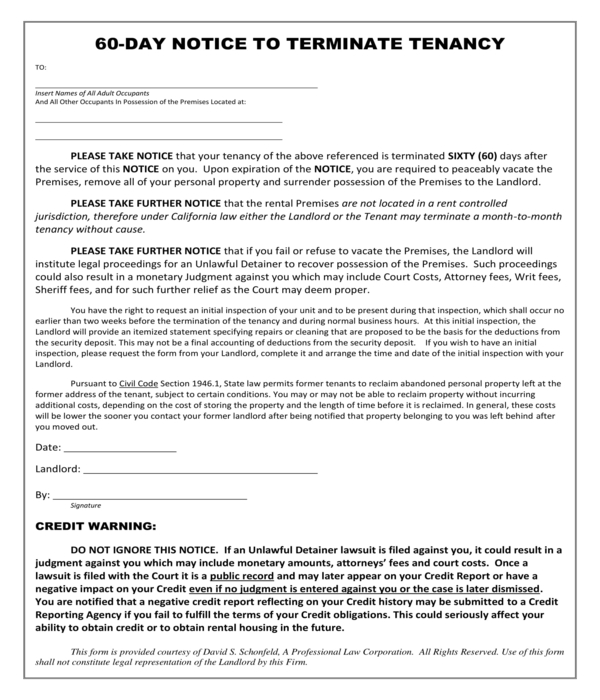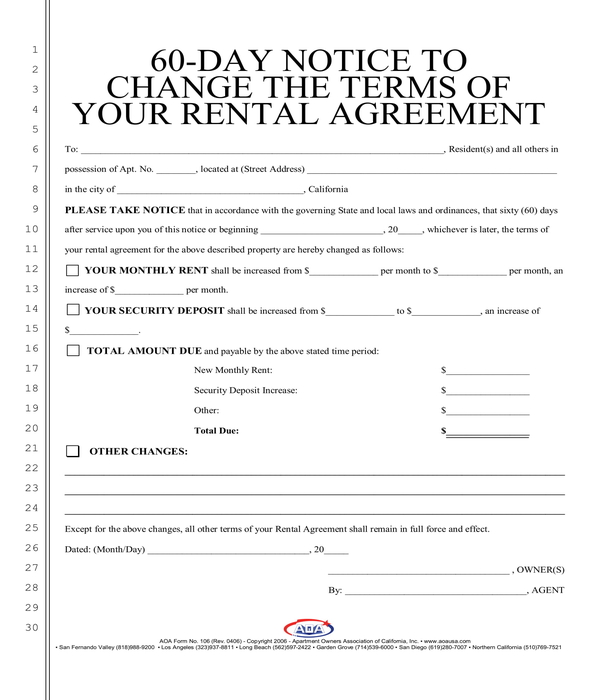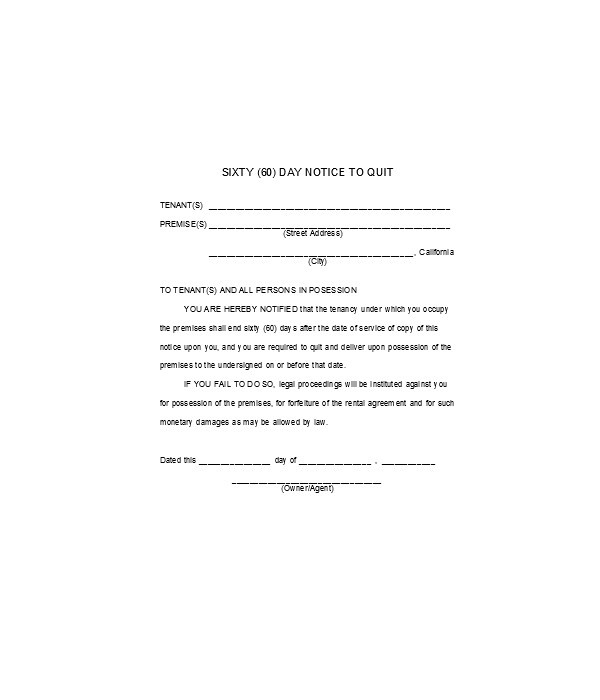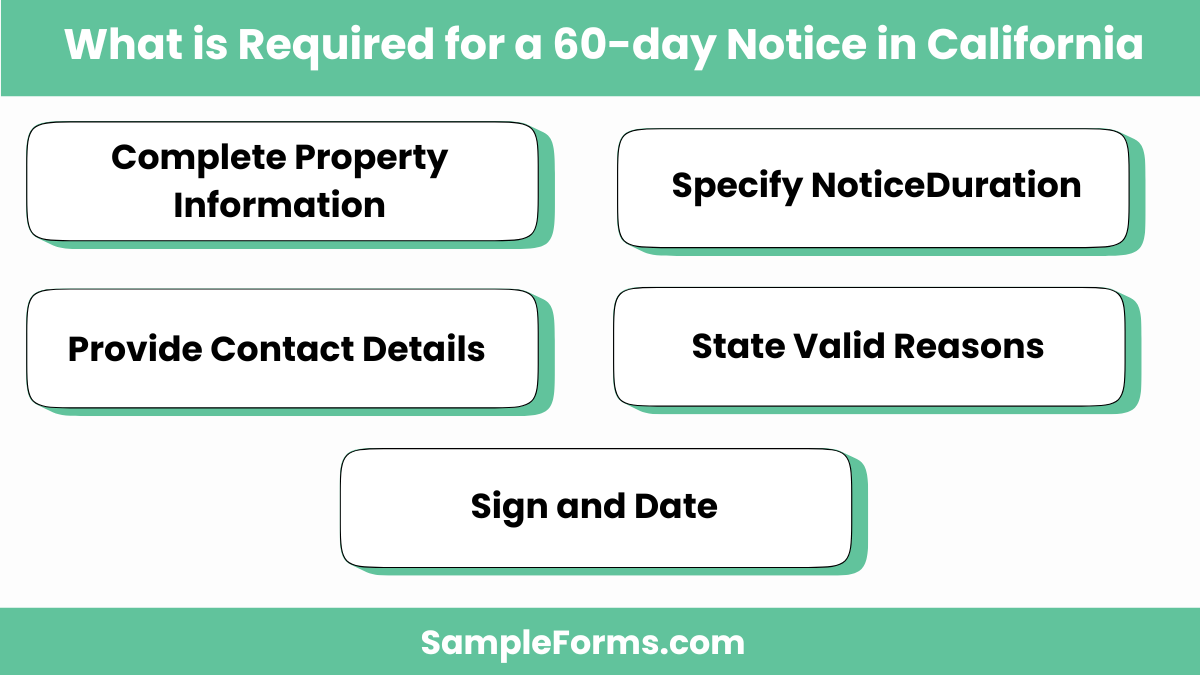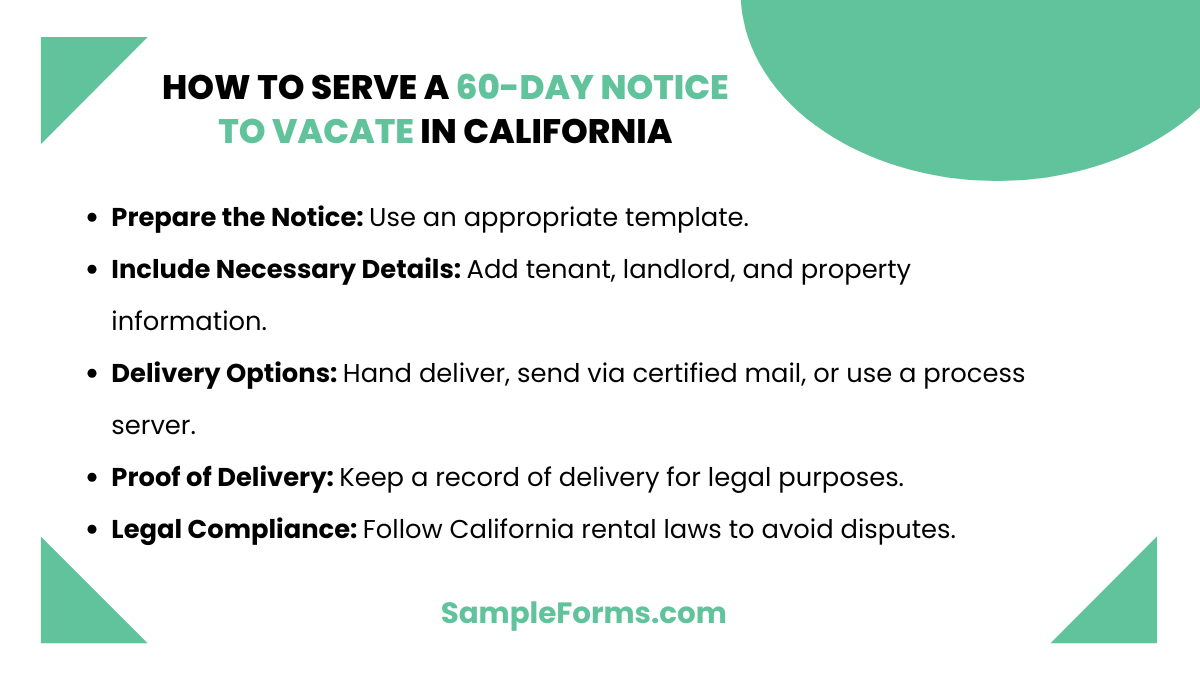A 60 Day Notice Form is a critical document used in tenant-landlord agreements for legally terminating leases or changing terms with adequate notice. This guide delves into crafting a professional Notice Form, providing insights for tenants and landlords. Whether transitioning to a new property or ending a lease, the form ensures legal compliance and clear communication. It also highlights the role of related forms, such as a 30 Day Notice Form, offering comprehensive examples and practical templates for hassle-free processes.
Download 60 Day Notice Form Bundle
What is 60 Day Notice Form?
A 60 Day Notice Form is a legal document used to notify landlords or tenants about lease termination or changes, ensuring compliance with agreed-upon terms and local laws.
60 Day Notice Format
Tenant Information
Full Name(s): __________________________________________
Address: _____________________________________________
City: ____________________________
State: ____________________________
Postal Code: ______________________________
Phone Number: ________________________________________
Email Address: ________________________________________
Landlord/Property Manager Information
Name: ________________________________________________
Address: _____________________________________________
City: ____________________________
State: ____________________________
Postal Code: ______________________________
Phone Number: ________________________________________
Email Address: ________________________________________
Notice Details
Reason for Notice:
[ ] End of Lease Agreement
[ ] Relocation
[ ] Home Purchase
[ ] Other: _______________________________________________
Last Day of Occupancy: ________________________________
Forwarding Address for Security Deposit Refund:
Tenant Declaration
I, ________________________________________, confirm that this notice fulfills the terms of my lease agreement and will vacate the property as stated.
Signature of Tenant(s): ____________________________
Date: ___________________________________
Landlord Acknowledgment
Received By: __________________________________________
Date: ___________________________________
Signature of Landlord/Property Manager: __________________
Apartment 60 Day Notice Form
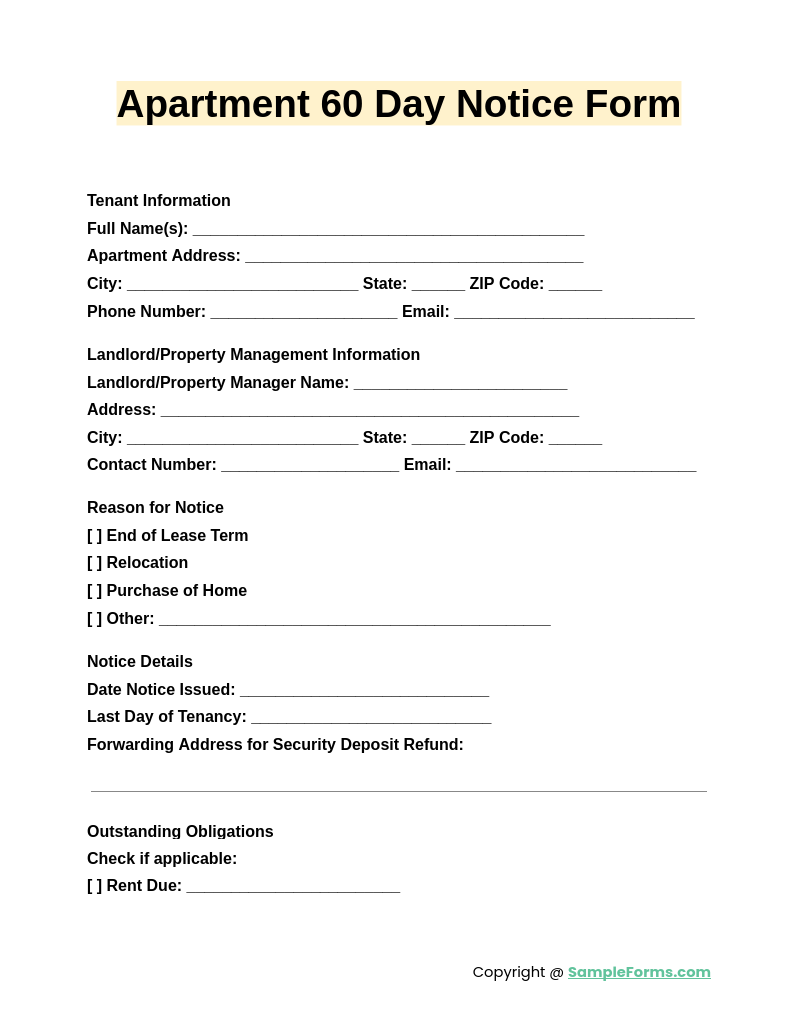
An Apartment 60 Day Notice Form notifies landlords of a tenant’s intent to vacate, ensuring compliance with lease terms. It simplifies transitions, much like an Eviction Notice does for rental agreements.
60 Day Notice to Vacate Form
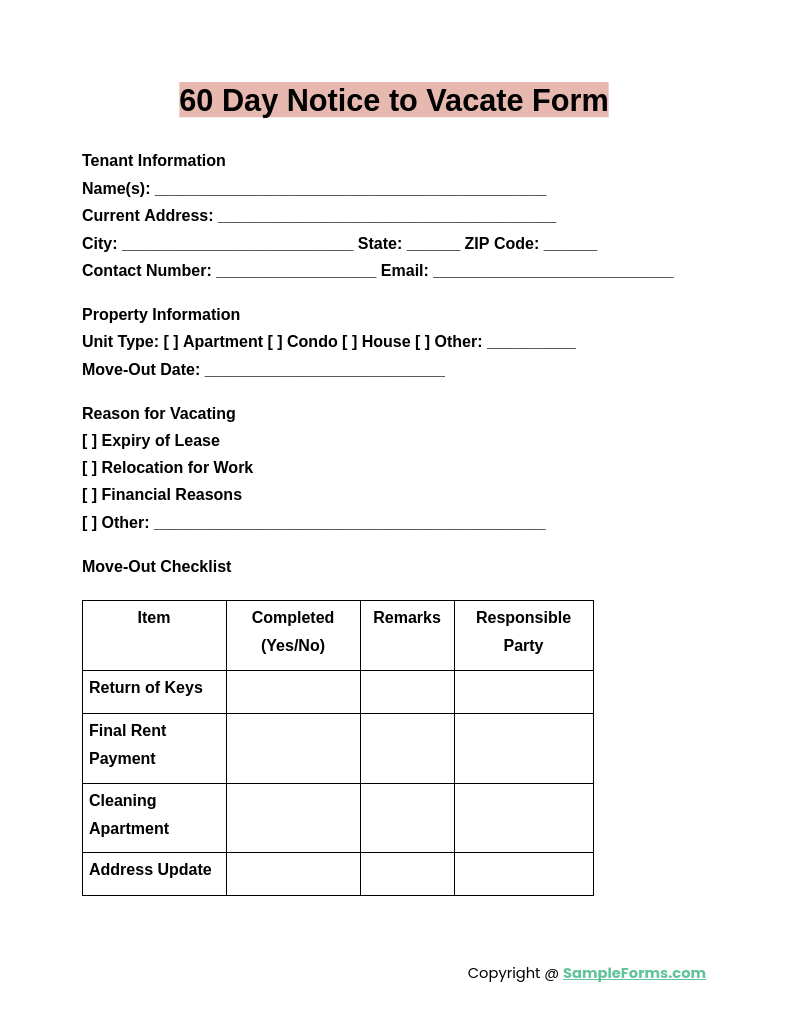
A 60 Day Notice to Vacate Form allows tenants or landlords to provide advanced notice for lease termination, promoting clarity. It complements forms like a 30 Day Notice to Tenant for streamlined processes.
60 Day Notice to Move Out Form
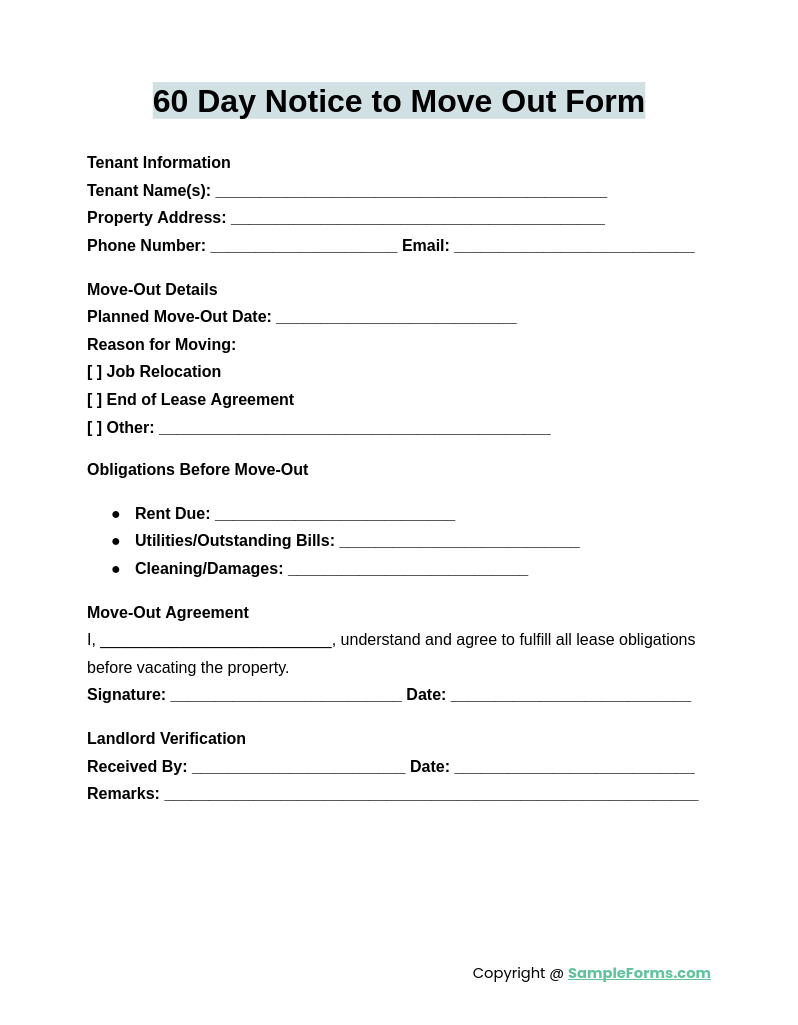
The 60 Day Notice to Move Out Form helps tenants formally declare intent to vacate a rental property, mirroring the structured approach of an Employee Warning Notice in workplace policies.
60 Day Notice to Quit Form
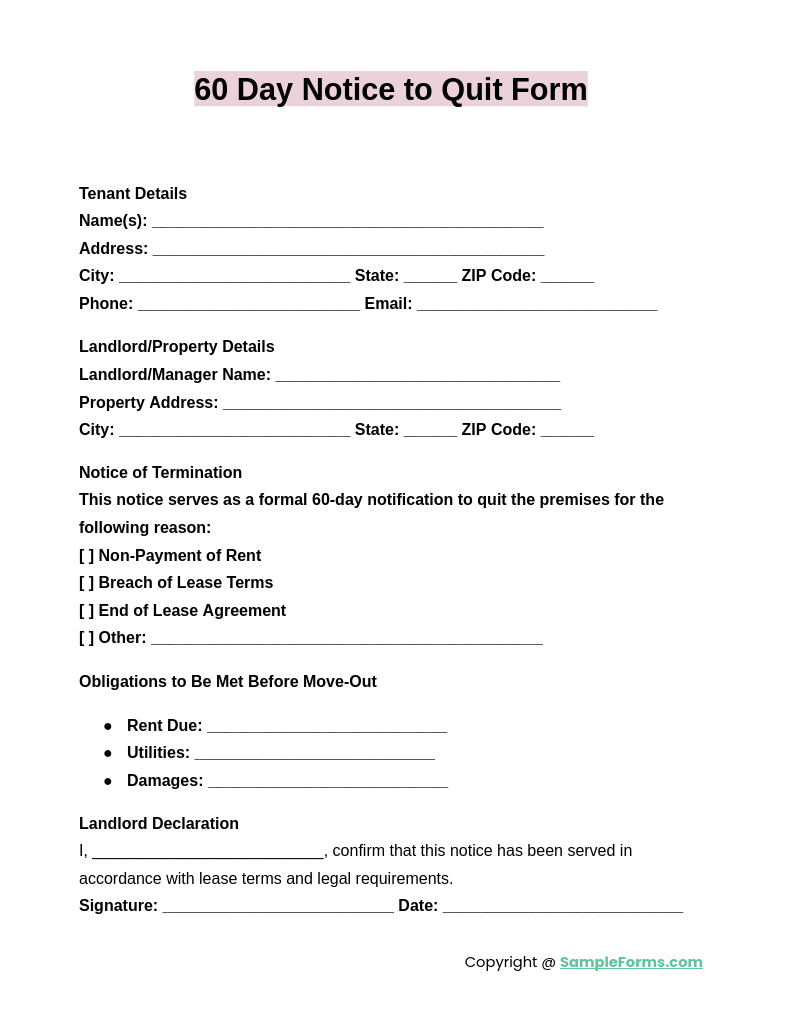
A 60 Day Notice to Quit Form is essential for landlords to notify tenants of lease termination, akin to a 30 Day Notice to Landlord Form for contractual clarity.
Browse More 60 Day Notice Form
60-Day Notice to Vacate
60-Day Notice to Terminate Tenancy
Notice of Termination by Landlord
60-Day Notice to Change Terms
60-Day Notice of Termination of Tenancy
60 Day Quit Notice Form
What is required for a 60-day notice in California?
A 60-day notice in California requires detailed tenant or landlord information, property address, and a valid reason for lease termination. Key requirements include:
- Complete Property Information: Include the address and unit details in the 30 Day Notice to Move Out Form format.
- Specify Notice Duration: Clearly mention the 60-day timeline.
- Provide Contact Details: Include tenant and landlord contact information.
- State Valid Reasons: Outline reasons complying with California rental laws.
- Sign and Date: Ensure the notice is signed and dated for validity.
How do you write a notice that you are moving out?
Writing a notice requires clarity, professionalism, and adherence to lease terms. The steps below ensure a valid and effective document:
- Header Information: Include a title like Employee Warning Notice Form with tenant and landlord names.
- Specify Property Address: Provide the full property details.
- State Move-Out Date: Clearly mention the last day of occupancy.
- Reason for Move-Out: Add a valid reason, if necessary.
- Signature and Date: Sign and date to complete the formality.
What are the reasons for a 60-day notice to vacate in California?
Common reasons for a 60-day notice include lease expiration, property sale, or breach of terms. Key reasons involve:
- Lease Termination: End of a fixed-term lease as indicated in the Notice to Proceed Form.
- Property Sale: When the landlord plans to sell the rental property.
- Tenant Breach: If tenants violate lease agreements.
- Relocation Needs: The landlord or tenant requires the property for personal reasons.
- Renovation Plans: Significant repairs or remodeling work requiring vacancy.
How do you count a 60-day notice?
Counting a 60-day notice begins the day after delivery and includes all calendar days. Specific rules to follow are:
- Start Next Day: Begin counting from the day after the Notice of Exemption Form is delivered.
- Include Weekends: Count weekends and holidays unless stated otherwise.
- Delivery Method Matters: Account for delays if delivered via mail.
- Final Day: The 60th day is the last day for compliance.
- Legal Verification: Ensure timelines adhere to state guidelines.
How to serve a 60-day notice to vacate in California?
Serving a 60-day notice requires proper documentation, delivery, and compliance with legal requirements. Steps include:
- Prepare the Notice: Use an appropriate template like a Notice to Vacate Form.
- Include Necessary Details: Add tenant, landlord, and property information.
- Delivery Options: Hand deliver, send via certified mail, or use a process server.
- Proof of Delivery: Keep a record of delivery for legal purposes.
- Legal Compliance: Follow California rental laws to avoid disputes.
How much money does a landlord have to give a tenant to move out in California?
California mandates relocation assistance for no-fault evictions, often equivalent to one month’s rent, as outlined in an Eviction Notice Form.
What is the 60-day notice for at-fault just cause?
A 60-day notice for at-fault just cause is issued for severe tenant violations, as referenced in a Notice of Completion Form.
How long can a tenant stay without paying rent in California?
In California, tenants typically face eviction after three unpaid days, though extensions may apply via a 60 Day Notice to Vacate Form.
What is an example of a written notice to move out?
A written notice includes tenant details, property address, and move-out date, resembling a Notice of Deposition Form for clarity.
Is a verbal eviction notice legal in California?
No, eviction notices must be written and properly served to tenants, as outlined in the Notice of Sale Form.
How much does it cost to evict someone in California?
Eviction costs in California range from $800 to $5,000, depending on circumstances, including filing fees and legal representation in a Notice of Violation Form.
Does an email count as a written notice?
An email is not typically considered a legally valid written notice unless explicitly agreed upon, unlike a Notice of Commencement Form.
What is a 60-day notice of termination of tenancy no fault just cause?
This notice ends tenancy without tenant fault, often due to landlord needs, similar to an Advance Beneficiary Notice Form.
Can I evict my tenant in California if I want to sell?
Yes, landlords can evict tenants for property sale with proper documentation, like a 30 Day Eviction Notice Form for compliance.
What happens if you can’t pay rent in California?
Tenants may face eviction if unable to pay rent, but they can negotiate extensions or seek relief using a Notice of Objection Form.
The 60 Day Notice Form offers tenants and landlords a structured way to handle lease transitions. Paired with the flexibility of a 3 Day Eviction Notice Form, it ensures smooth and efficient property management.
Related Posts
-
FREE 6+ Notice to Pay or Quit Forms in PDF | MS Word
-
FREE 5+ Notice to Terminate Tenancy Forms in PDF
-
FREE 9+ Notice of Rent Increase Forms in PDF | MS Word | Excel
-
FREE 11+ Notice of Objection Forms in PDF | MS Word
-
FREE 7+ Notice to Enter Dwelling Unit Forms in PDF | MS Word
-
FREE 6+ Compliance Notice Forms in PDF | MS Word
-
FREE 5+ Notice to Enter Forms in PDF | MS Word
-
FREE 3+ Advance Beneficiary Notice Forms in PDF | MS Word
-
FREE 3+ Payroll Change Notice Forms in PDF
-
FREE 6+ Sample Notice of Election Forms in MS Word | PDF | Excel
-
FREE 5+ Sample Pull Notice Forms in MS Word | PDF
-
Notice of Exemption Form
-
FREE 7+ Change in Custodian Forms in MS Word | PDF | Excel
-
FREE 4+ Uniform Commercial Code Forms in PDF
-
FREE 5+ Formal Resignation Letters in PDF | MS Word

